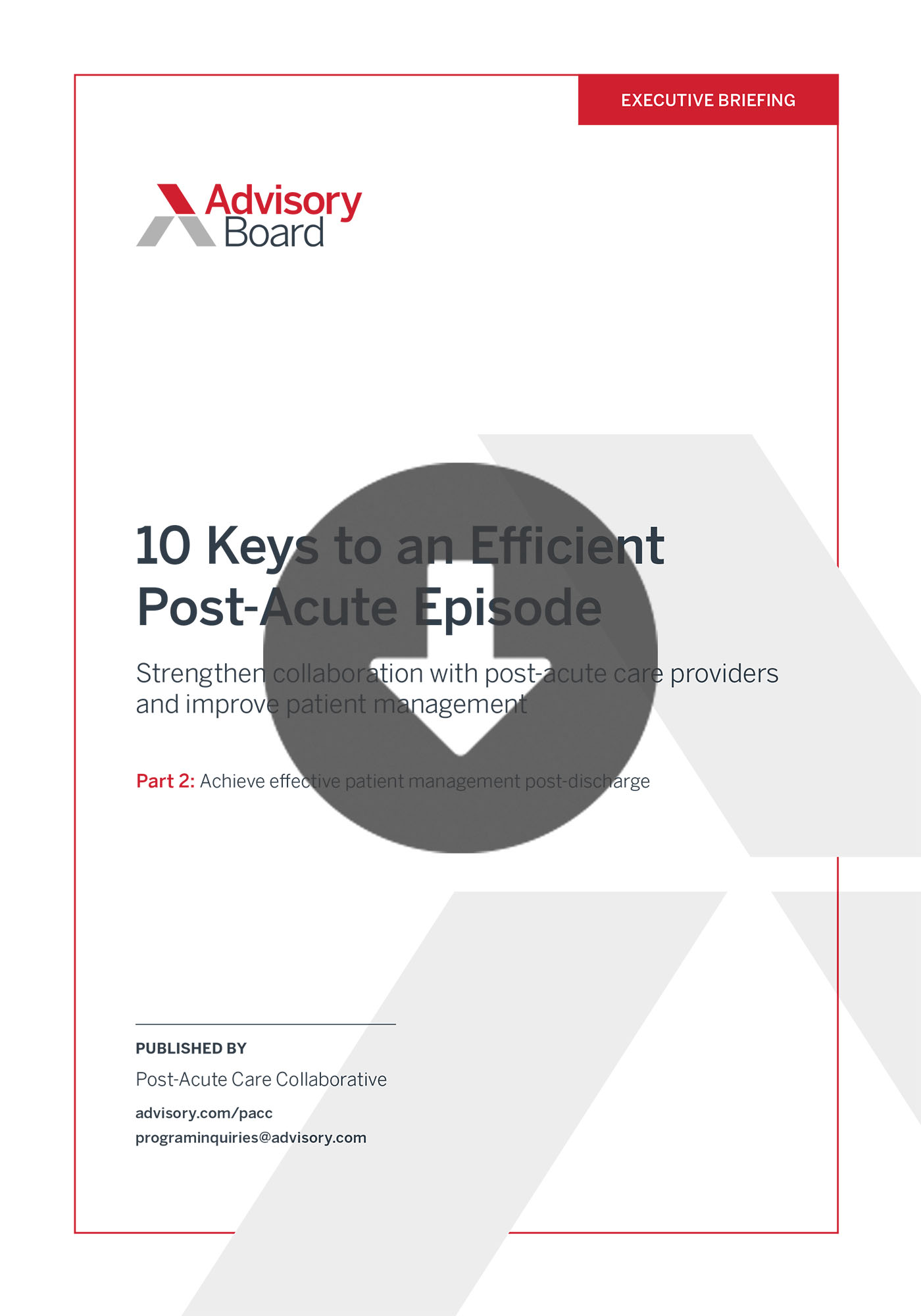Post-acute performance—from episodic cost to readmission rates—increasingly impacts hospital financial success, regardless of a health system’s level of risk. Yet, significant variation in post-acute quality and cost means that successful post-discharge outcomes depend on the performance of individual PAC providers. As a result, hospitals are forming narrow networks with the highest-quality PAC providers to maximize the number of patients treated by top-quality providers.
Below, we outline how to identify generalist PAC partners to accommodate the specific needs of your high volume patients. We also review a case study in which Lehigh Valley Health Network built their generalist network, and the metrics they used to evaluate partners.
To learn more about how to optimize your post-acute network, download our guide: 10 Keys to an Efficient Post-Acute Episode – Part 2: Achieve effective patient management post discharge.
Infographic: We surveyed nearly 4,000 consumers about their care preferences and outlined the top four things post-acute patients and families want from their health care experience
When selecting preferred PAC partners, hospitals should first identify generalist partners. SNFs and HHAs are able to care for the majority of patients needing post-discharge support and have significant variability on quality and efficiency performance, making these sectors a high-impact initial opportunity.
When assessing candidates for closer post-discharge partnerships, hospitals should inform all providers in the market of the initiative and request relevant information from them to determine partnership viability. This can be done via a request for proposal (RFP). In addition to the RFP, health systems should also gather data on top providers through additional means—for example, through conducting in-person interviews or tours—rather than rely solely on the RFP to make decisions.
Implementation Advice from our Experts- Use RFPs for initial cut of lowest-performing, low-volume providers
- strong>Layer on additional processes, such as interviews, that compensate for difficulties in real-time data sharing and provide meaningful insight into less tangible partnership considerations
- Avoid weighting all metrics equally in evaluating providers, and instead consider their relative importance to hospital priorities
Case study: How LVHN evaluated local SNFs and built their preferred network
Case Study
How one health system extended their care pathway into the post-acute setting with one simple changeLehigh Valley Health Network (LVHN), a health system in eastern Pennsylvania, sought to build relationships with local SNFs aligned around the system’s goals of improving quality and lowering costs.
To identify such SNFs, LVHN created the Collaborative Partner Prioritization Tool, which uses six metrics to select potential partners. In addition to measuring patient volumes at various SNFs and their all-cause readmission rates, LVHN looked for evidence of the SNF’s existing collaboration—for example, how often the SNF attended LVHN-sponsored programs and meetings. Such metrics allowed LVHN to measure not only objectively quality performance, but also readiness for collaboration and strategic alignment with LVHN goals.
LVHN then assigned varied weighting to the six variables to reflect their importance in terms of the overall value of the potential SNF relationship.
Get resources like this delivered straight to your inbox. Subscribe now
Ultimately, LVHN found that roughly 70% of LVHN patients went to one of 20 SNFs. Out of these 20, LVHN identified “Tier 1” SNFs, which performed well in both quality and readiness for collaboration, to prioritize for alignment efforts.
Don't miss out on the latest Advisory Board insights
Create your free account to access 2 resources each month, including the latest research and webinars.
Want access without creating an account?
You have 2 free members-only resources remaining this month remaining this month.
1 free members-only resources remaining this month
1 free members-only resources remaining this month
You've reached your limit of free monthly insights
Become a member to access all of Advisory Board's resources, events, and experts
Never miss out on the latest innovative health care content tailored to you.
Benefits include:
You've reached your limit of free monthly insights



